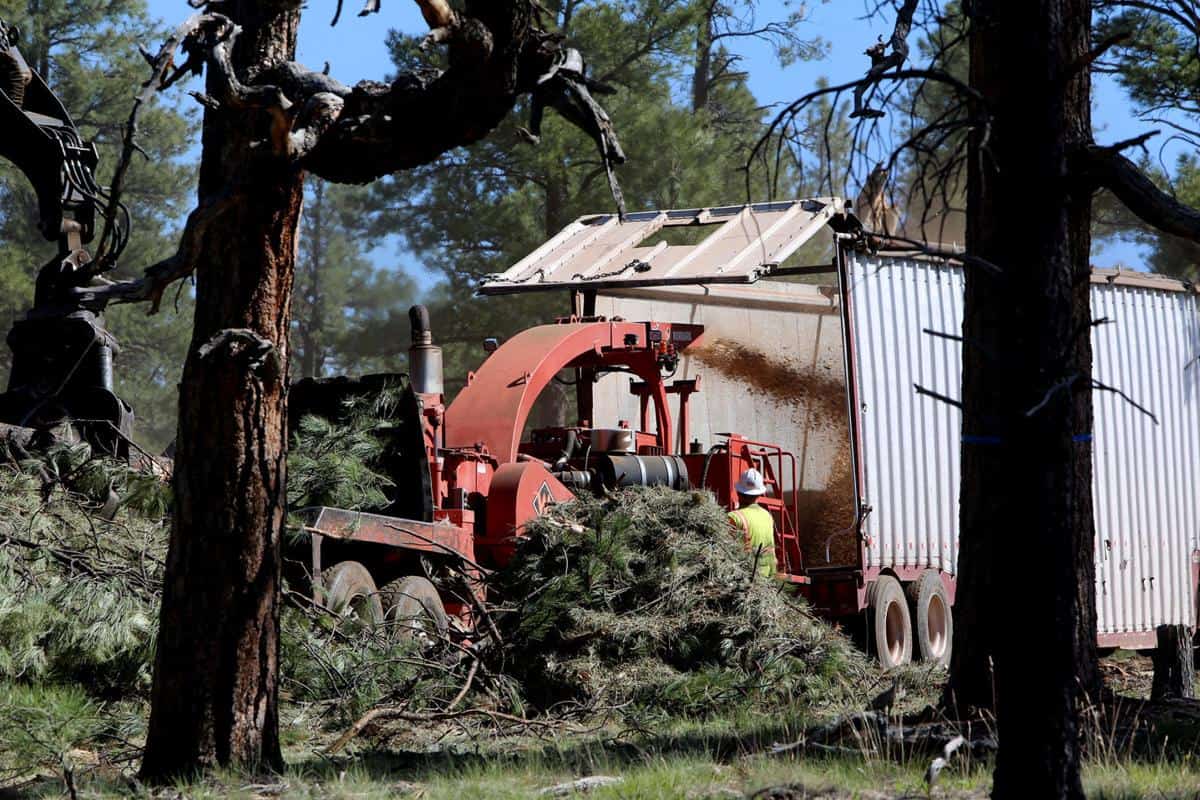
USDA Forest Service Chief Randy Moore today announced new funding and a redesigned strategy for the Four Forest Restoration Initiative (4FRI) during a visit with elected officials in Arizona.
The agency will be committing $54 million dollars in fiscal year 2022 to accelerate the needs for implementing high-priority projects on 135,000 acres over the next 10 years. The funding will also address annual road and bridge maintenance.
“The Forest Service is increasing the scale of our investments into the 4FRI project, and we’re getting started sooner than previously planned,” said Chief Moore. “This strategy will focus our forest maintenance work to reduce wildfire danger in the 4FRI project area where wildfire is most likely to place homes, communities and infrastructure at risk. By placing our treatments in the right places and at the right scale, we will reduce wildfire risk, protect communities, and restore forests.”
The announcement today represents an important step toward the agency’s broader, national strategy to treat landscapes, protect communities and watersheds, and create fire resilient forests at the scale needed to address the nation’s growing wildfire crisis.
“We are committed to reducing the risk of destructive wildfire and protecting communities, and recognize the scale of the need for restoration,” added Chief Moore. “Industry is vital to our success in this commitment, and we are fully committed to working with partners to achieve our restoration needs at scale.”
The key decisions from the 4FRI Restoration Strategy are:
Immediately prioritize and expand the highest-priority, partnership projects to significantly reduce the risk of catastrophic wildfire to communities on approximately 135,000 acres (i.e. Bill Williams Mountain, Flagstaff Watershed Protection Project, CC Cragin, Sierra/Anchas).
Immediately implement current plans which provide approximately 300,000 acres over 20 years to maintain existing industry.
Treat 86,000 acres using prescribed fire and non-commercial thinning (over 20 years) on the Tonto and Kaibab National Forests.
Conduct a rapid assessment and optimization effort using the best available science to assess approximately 300,000-350,000 acres (over 20 years) on the Coconino and Kaibab National Forests, with treatments assessed to prioritize which acres to treat to reduce the risk of wildfire the quickest beginning in FY2023.
Focus on resolving and improving conditions for industry success by addressing factors like cost and risk reduction, incentives, market conditions, availability of raw material, transportation plans, and fire liability risks.
There is also a paper that has more detail.
Accomplishments and Expected Outcomes
The restoration strategy is quicker and more diverse with opportunities for existing and new industry. It uses a variety of scales, different contracts and agreements, over multiple time frames (5,10, 20 years) to expand industry and jobs (1,400 jobs and $56.6M income in FY2021).
Based on pending and completed National Environmental Policy Act (NEPA), there is a need to treat approximately 700,000 to 880,000 acres over the next 20 years to meet desired conditions and reduce wildfire risk using a variety to approaches include mechanical thinning and prescribed burning. These acres include the high priority partner projects, providing acres to maintain existing industry and both product and non-product removal areas with implementation tools to be determined. This is in addition to 258,000 acres already completed under 4FRI over the past 10 years.
Considering the total acres treated and planned under this strategy (up to 1.2 million acres) across the 2.4 million acres landscape, the outcome is approximately treating 47% of the 2.4 million acres.
Based on new information for restoring fire-adapted ecosystems in 4FRI for fire resiliency (RMRS GTR 424), blending financial and resiliency objectives are critical to defining the overall outcomes for success. On average only 40% to 50% of a planning area’s acres need to be strategically treated to reduce 80% of the exposure from wildfire. This collaborative effort will help to further understand and define tradeoffs between financial and fire resiliency objectives, while we continue to implement this 4FRI Restoration Strategy
It sounds as if they are breaking the work down into smaller contracts to give opportunities to a variety of industry, and focusing on prioritizing reducing wildfire exposure to communities of all the possible acres that could be treated. The latter seems like a general movement within the FS and part of the national 10 year plan.